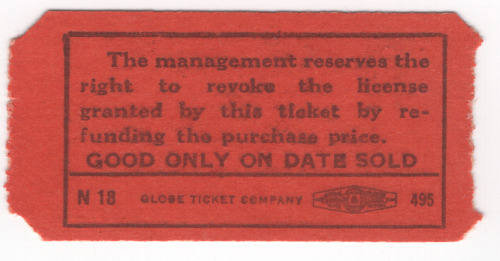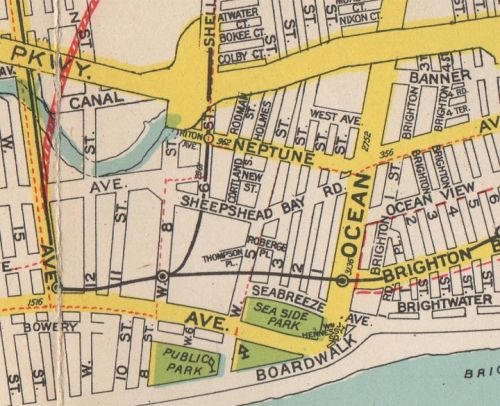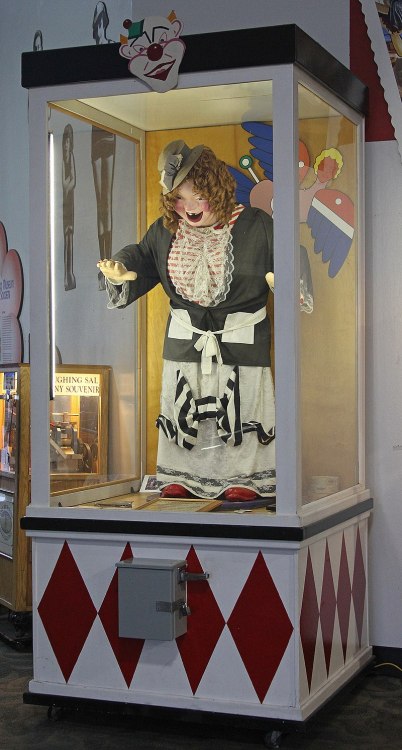Magic Carpet Fun HouseConey IslandThe Magic Carpet Fun House was one of many attractions at Coney Is
Magic Carpet Fun HouseConey IslandThe Magic Carpet Fun House was one of many attractions at Coney Island in the early- to mid-20th century. Located at 1501 Bowery and West 15th Street, the attraction was run by Edie and Seymour Maxim, who also ran the Donkey Game next-door. On the other side of the Magic Carpet Fun House was the Tunnel of Laughs and opposite these was the Thunderbolt Roller Coaster.It opened somewhere between 1925-1941, and like many of these types of attractions, it is poorly documented and most information comes from oral records.The fun house attraction was a common style of facility found at amusement parks and fun fairs of the time. There were indoor structures with wacky and whimsical atmospheres intended to surprise and entertain guests. They are typically self-guided, and feature various interactive elements, such as funhouse mirrors, physical and optical distortions, dark mazes, and obstacle courses.Most accounts of this one found at Coney Island focus mainly on the “Laughing Lady” and the namesake slide which led the guest out of the building.The Laughing LadyAlso going by Minnie Ha Ha, this audio-animatronic figure stood outside the attraction, and appears to have left a lasting impression in the minds of generations of visitors. “’HA HA HA.’ It could be heard from a distance and children especially loved her and liked to imitate her laugh.” — Taty Alicea“The cackling sound of the lady laughing was a big part of my Coney Island. You heard her laugh, and that was the whole key to Coney Island.” — Lenny GoodsteinHere are some more great oral histories of the figure!The Laughing Lady was in-fact one of many similar animatronics that could be found throughout the country during this period. They were produced by the Philadelphia Toboggan Company (PTC), and this particular model was known as Laffing Sal. It was a 6ft, 10in papier-mâché figure of a woman on a 12in pedestal. It would wave its arms and lean forward at the waist. There was also a record player hidden within the pedestal, which played recording of a woman’s laugh on 78-rpm phonographs. The base model featured a set appearance of an artificial wig and missing tooth. The purchaser could customises them with their their own clothing and hats. In the images above, the first Laffing Sal image is the preserved version that was found at Coney Island, while the following two are of the model found at San Francisco’s Musée Mécanique.If you want more in the topic, my full research notes on all topics are available for all $3+ Patreon patrons!Image SourcesMagic Carpet Fun House ticket, front | SRNY CollectionMagic Carpet Fun House ticket, back | SRNY CollectionMap, Geographica Maps via Forgotten-NY, 1938 | SourceMagic Carpet Fun House building, front | SourceMagic Carpet Fun House building, side, 1969 | SourceConey Island’s Laughing Lady / Minnie Ha Ha | SourceLaffing Sal at the Musée Mécanique in San Francisco, close-up | SourceLaffing Sal at the Musée Mécanique in San Francisco, full | SourceConey Island, Fun House interior, c.1970s | SourceThis post comes to you thanks to Patreon supporters at the Ephemera Club level. Those subscribed in January 2022 will receive a genuine Magic Carpet Fun House ticket, and a fun 1940s arcade card. If you would also like to receive neat, period-appropriate items in the mail each month, you too can join the Ephemera Club for just $15. Spaces are limited![ Support SRNY through Patreon and Ko-Fi ] And join us on Discord for fun conversation! I also have an Etsy with up-cycled nerdy crafts -- source link
Tumblr Blog : steve-rogers-new-york.tumblr.com
#steve rogers#bucky barnes#coney island#brooklyn museum#new york#historically accurate#vintage fashion#20th century#fun house#magic carpet#ticket#patreon#epemera







